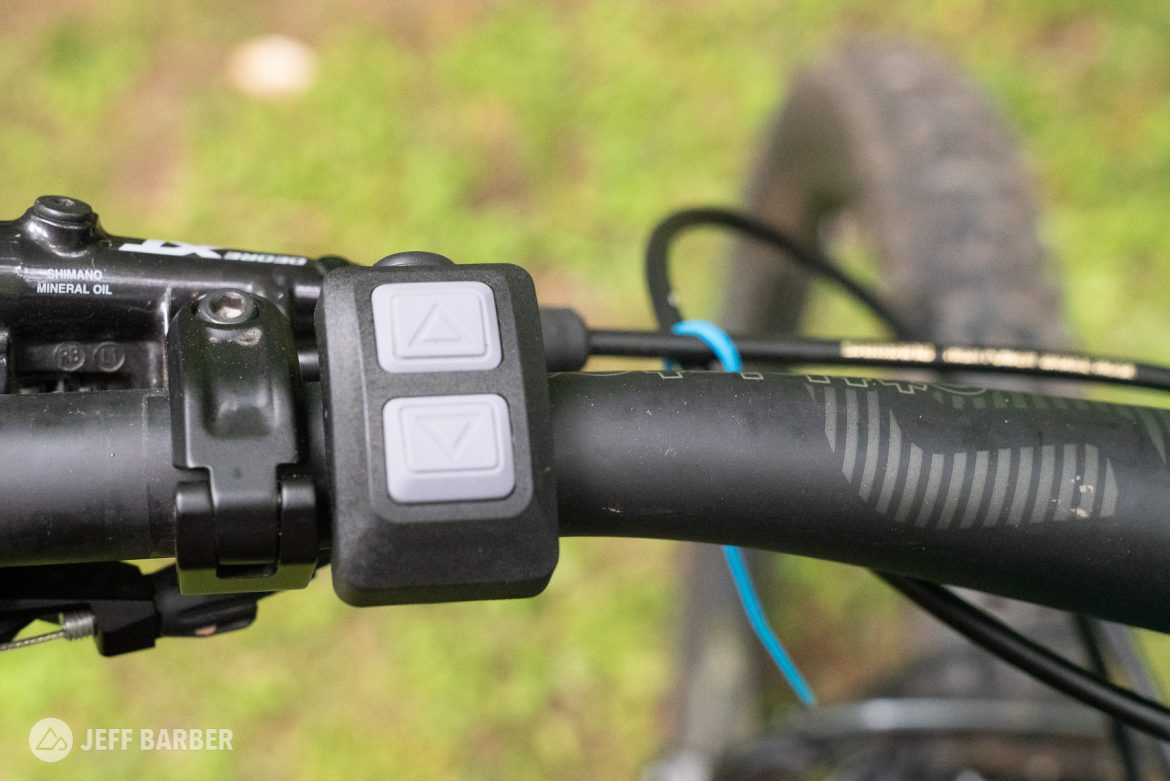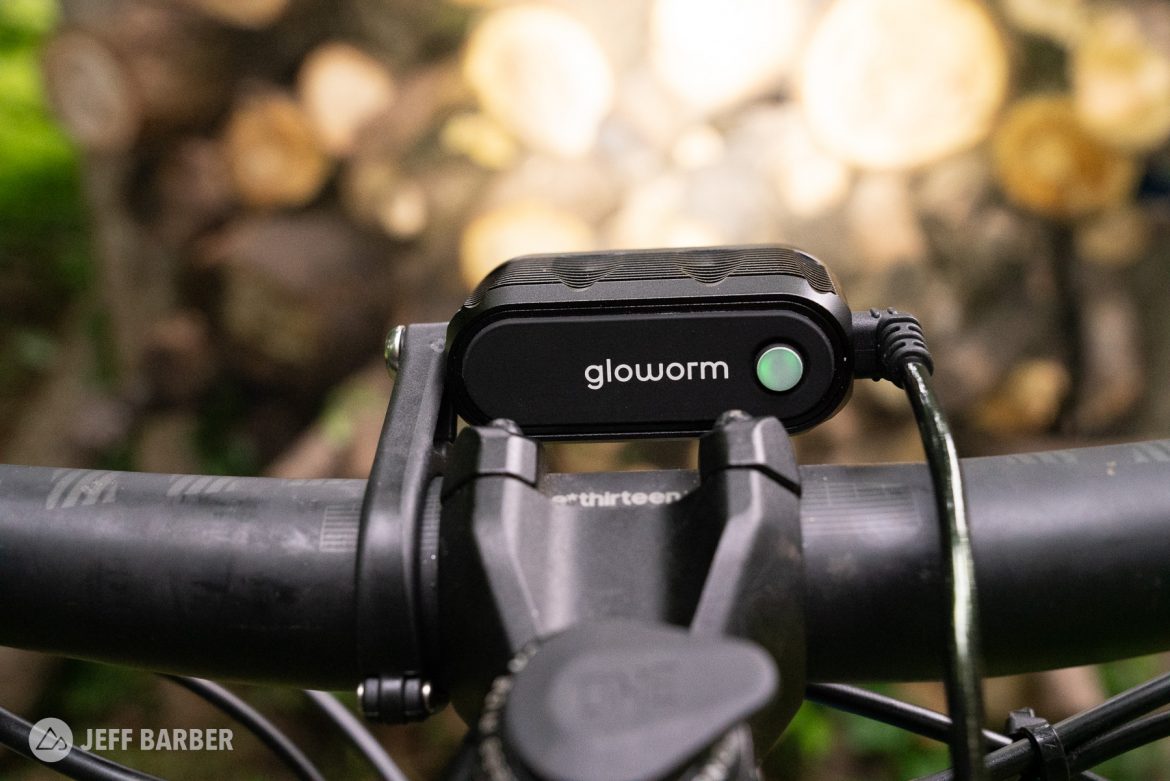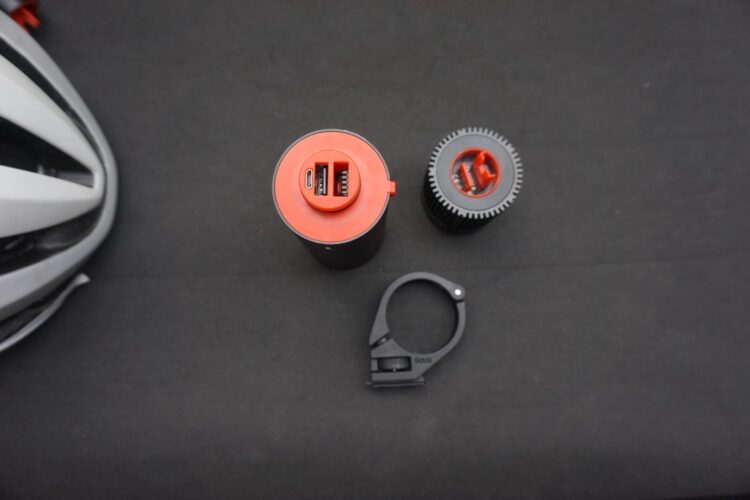Over the past several seasons, basic bike lights for riding at night have become a dime a dozen, almost literally. But what about high-performance lights? With the second generation XSV light set, priced at $400USD, Gloworm seeks to answer that question with a feature set that, on paper, offers serious night riders nearly everything they need. I’ve been testing the Gloworm XSV G2 for the past several weeks to find out if it actually delivers.

Lumens, if (and when) you need them
Let’s start with the number every rider tends to focus on first: Lumens. The XSV is the most powerful light in the Gloworm lineup, offering 3,600 lumens on high. The brand notes those are “real” and not “theoretical” lumens, and since we don’t have a lumen measurement thingie we’ll take their word for it. The thing is, most riders won’t need 3,600 lumens for most rides, but that brightness does come in handy for the fastest trail segments or spotting features at a distance.
The XSV G2 offers three light intensity settings by default (20%, 70%, and 100%), and these can be customized using the free Gloworm app. I found 50% brightness is ideal for my regular rides, so I made that my middle mode. Gloworm says the included battery should last about two hours on full brightness, which means roughly four hours at 50% intensity. My usual night ride includes about 2-2.5 hours of riding (plus one hour of drinking) and I found I only needed to charge the battery every other week.



Curiously the Gloworm app cannot be used to control the light directly, either to turn it on and off or to set the brightness during the ride. However, an included bar-mounted remote does the job nicely and lets you keep your phone stashed safely during the ride.
Charged riding
Where the Gloworm XSV G2 really sets itself apart is with the battery and its various smart features and standardized connectors. The battery features a surprisingly high-res, backlit LCD screen to display messages including the runtime remaining. I’ve been testing the light with the battery strapped to my downtube so unfortunately, the display isn’t visible without stopping the bike. The display also lets you know when the battery is in pairing mode with the app or the wireless remote, and whether it’s charging or not.

Both the light and the battery feature a USB-C port for connecting a power cable. Gloworm includes long and short male-to-male, USB-C cables in the box, plus adapters to do weird and wonderful things like using the battery pack to charge a smartphone or a GPS during the ride. If you’ve owned a bike light with a proprietary charging cable (like previous generation Gloworms) you’ll understand how much more convenient it is to charge the light using cables you already have laying around at home. The male-to-male cable even makes it possible to charge the battery from some e-bike systems, though unfortunately not to run the light itself.
The included cables appear to be thicker and more robust than standard ones and are designed to fit the recessed USB-C ports in the light and battery. I found the connectors can be a bit finicky and don’t always stay tightly connected. On more than one occasion I assumed the battery was charging, only to find it wasn’t because of a bad connection. The moral of the story is to confirm the battery is charging by looking at the display. Once it’s going, let the charger do its thing and don’t touch or move it. A full battery charge from empty is said to take about four hours.
The light and battery are IP67 waterproof rated and after testing in wet conditions, I can confirm the unit is well sealed against moisture.
Beaming from ear to ear
Unlike most other bike lights on the market, Gloworm includes spare optics to adjust the beam pattern to the buyer’s preferences. Out of the box the XSV features “spot” optics on the two ends and a “honeycomb” lens in the middle to fill in and smooth the transition between the two bright beams. An included “wide” lens can be swapped to provide more peripheral light, though the tradeoff is it’s less efficient than a “spot” lens. More peripheral light can be particularly advantageous when running the XSV as a bar light by itself.

Speaking of bar mounting, the XSV G2 is compatible with both 35mm and 31.8mm diameter bars. The locking, quick-release style mount is easy to install and adjust. The light also works with Go Pro style mounts. This could be a good option for helmet mounting, though for me this set isn’t ideal for helmet mounting. Because the battery is so large, it really needs to be stored in a jersey pocket or backpack, and the power cord can be a snag hassle and/or mobility limiter. The light head by itself is fairly lightweight (116g), though it is a large target for low branch strikes.
Even mounting the large, 358g battery to a bike frame can be tricky. The downside to having so much juice for the ride is that the battery is heavy and it wants to slide around on bumpy trails. Sometimes I’m able to get the battery nice and secure to the frame using the included velcro strap, and other times I have to re-tighten it more than once during the ride. Unfortunately, it’s not possible to charge the battery while still attached to the bike (at least with my garage outlet setup) which means taking the battery on and off the bike every time.
With the light mounted to the bars, the remote isn’t really necessary, though it does offer a safer and easier control than the button on the back of the light head. In a helmet-mounted position, the remote is invaluable.
If you’re not sure what you’re missing with the inexpensive bike lights found online, just check the Gloworm XSV G2 feature set. With customizable brightness modes and optics, a long-lasting battery, well-considered plugs and cables, and a flexible mounting system, this is a high-end bike light system that won’t leave buyers squinting for more.
Pros
- Bright and incredibly powerful
- Highly customizable
- Easy to mount and use
Cons
- Expensive
- Included cables don’t fit tightly
- Heavy battery



















